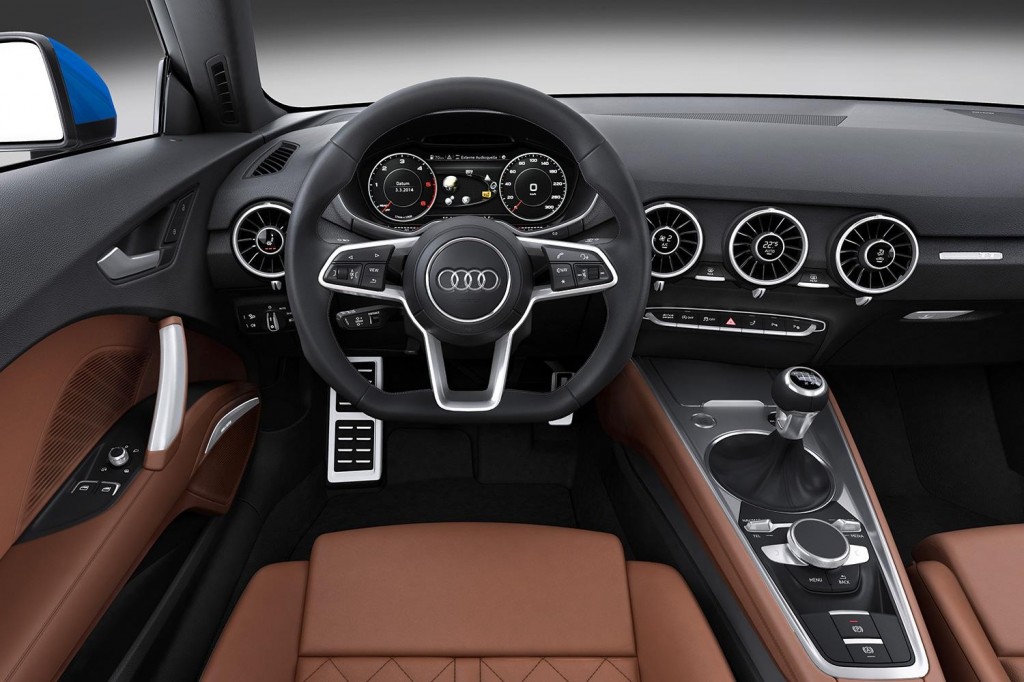With all the models Audi is releasing, conceptualizing, leaking, designing and previewing, it can be easy to lose track of one or two in the shuffle. The TT, however, is one that should definitely stay at the top of your list. Digital Trends was recently invited by Audi to Ingolstadt, Germany, to keep some the anticipation alive while we wait for units of the 2015 TT to be ready this year. Herein we will summarize some of what they gleaned, and provide analysis.
The body of the TT is somewhat in transition. When the concept first appeared in 1995—and then released as a production model in 1998, it was a curvy car. The integrated rear bumper, the swoop of the roofline, the rounding of the headlights—all of these details were united in a theme of bubble-like proportioning.
The new TT is interesting. It retains the skeleton but jettisons the baby fat. The rear bumper is still integrated, but it’s more of a vertical cliff than a protrusion. The rear windows have the slant of a fastback instead of the gentle flow of a cabin. Gradual arcs on the sides have been replaced by 70 degree splits, and everything is lines and divisions, almost as if the car was made to be snapped together in panels by a giant toymaker.
This is the lightest TT ever by a margin of 120 lbs. The distance between wheels is longer but the car overall is shorter, a feat which gives it more grip, reduces weight and improves handling. Plus, a smaller car just feels tighter.
The most striking aspect of the interior is how few controls are present on the center console. While we can only dream of the day when cars drop the “TV remote” ethos of 1,001 buttons on the steering wheel, doors, dash, center console, floor and windows, and adopt the Leonardo DaVinci mandate of “Simplicity is the ultimate sophistication” that rules Silicon Valley, the Audi TT is a step in that direction.

This is accomplished by the virtual cockpit, a 13-inch horizontal digital display behind the steering wheel. The panel runs two completely isolated chipsets so that if luxury items like navigation and audio experience a software crash, it will not cause your speedometer or fuel gauge to suddenly vanish. Like a smartphone, a digital display makes many physical buttons redundant, which means the dash can be much less adorned.
All in all, this was a good look at the TT, and highlighted a few aspects that make it superior to last year’s iteration. It also serves as a good preview to the road tests, which by now have a lot to live up to. With the auto industry trending toward smaller, lighter cars in nearly every vehicle class, two-seat rockets like the TT have to run fast, or face extinction. Good thing that’s what the TT is known for.



